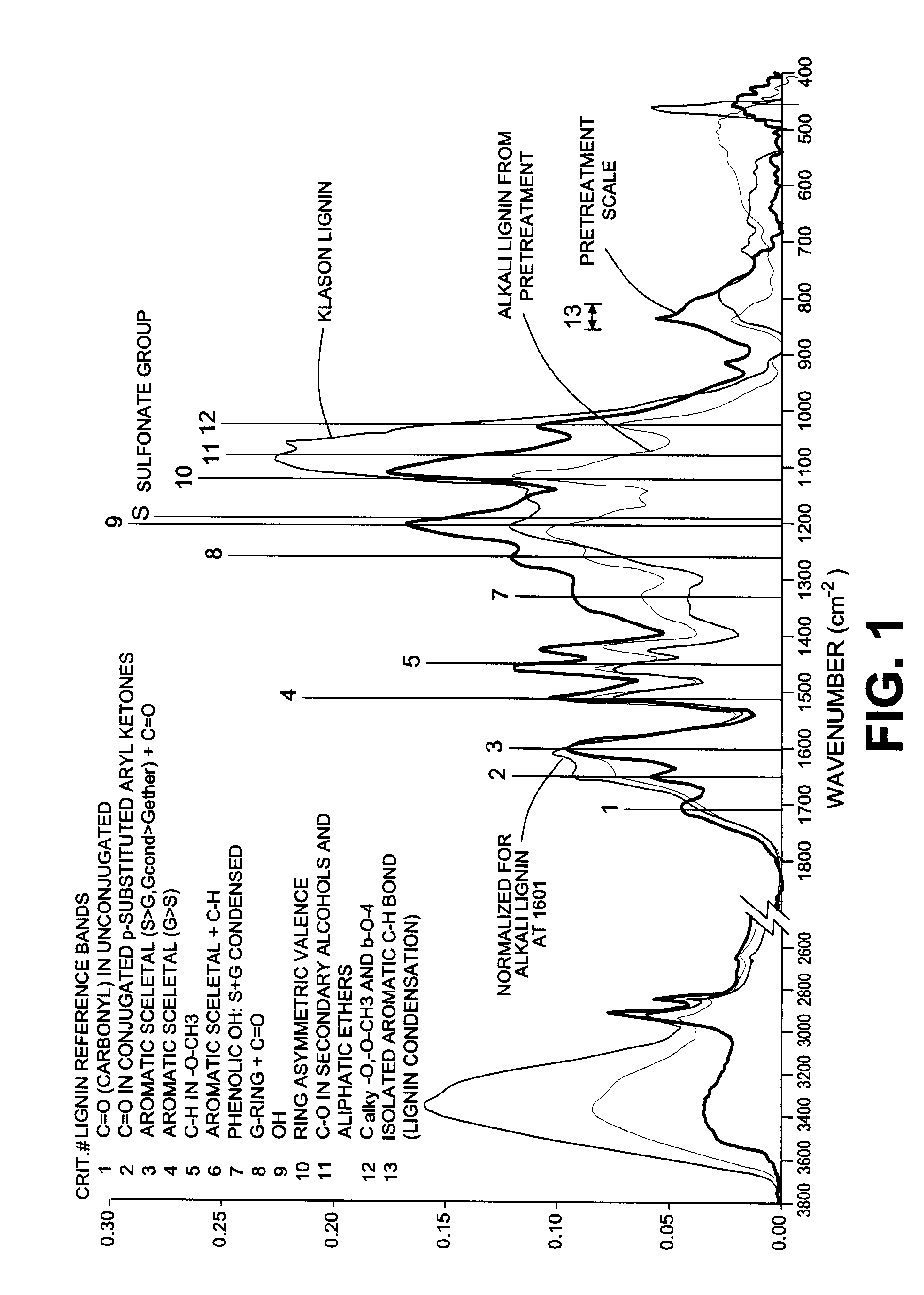Method for scale removal during a lignocellulosic conversion process
a conversion process and lignocellulosic technology, applied in the direction of cellulose treatment using microorganisms/enzymes, pulp deposit formation/corrosion prevention, glucose production, etc., can solve the problems of high scale removal and difficult dissolution, and achieve the effect of reducing the downtime resulting from scale removal, high scale removal levels, and short time periods
- Summary
- Abstract
- Description
- Claims
- Application Information
AI Technical Summary
Benefits of technology
Problems solved by technology
Method used
Image
Examples
example 1
Discovery and Characterization of Pretreatment Scale
[0087]During the pretreatment, it was found that a solid deposit was accumulating along the inner surface of the pretreatment reactor, thereby disrupting the flow of the wheat straw slurry through the reactor and consequently downstream stages of the process.
[0088]Prior to pretreatment, the feedstock was reduced in size. Wheat straw was received in bales measuring 3 feet by 3 feet by 4 feet and chopped to approximately ¼ inch in size. The straw was then pretreated with sulfuric acid, which involved mixing the wheat straw with water and sending the resulting slurry to a standpipe where 93% (w / w) sulfuric acid was added to reduce the pH of the slurry to about 0.9 to 1.4. The slurry was pumped through piping heated by direct injection with 600 psig steam to reach a temperature of 170-220° C. and the heated, acidified stock was held at this temperature for 1 minute as it passed through a pretreatment reactor. Upon exiting the pretreatm...
example 3
The Effect of Temperature on the Dissolution of Lignin Scale by Alkali
[0094]Scale was collected from a pretreatment reactor. The scale used in the dissolution experiment was harvested from a run that was estimated to be 140 hours in duration and that plugged the pretreatment reactor. This scale was found to be very hard and brittle.
[0095]After drying, 0.7 g of scale previously ground in a coffee grinder and 14 g of 4% or 10% (w / w) NaOH was added to a lab bomb reactor (¾ inch opening outer diameter; ⅝ inch inner diameter). The bomb was sealed tightly at both ends and then submerged in a hot oil bath set at a specified temperature. The reaction was carried out in the oil bath for two hours at temperatures of 120, 140, 160, 180, 200 and 220° C. with either 4% or 10% (w / w) NaOH. To quench the reaction, the bombs were carefully removed from the oil bath and submerged into a bucket of cold water for 1 minute. Complete scale dissolution was achieved at 220° C. with 10% NaOH for 2 hours. Th...
example 4
The Effects of Scale Aging on Dissolution with Alkali
[0098]In order to understand the effect of aging the scale on its resistance to dissolution using caustic treatment, a scale that was harvested shortly after a 20 hour pretreatment run was cooked for different lengths of time to simulate pretreatment conditions with sulfuric acid.
[0099]Aging the scale involved adding 0.7 g of scale previously ground in a coffee grinder and 14 g of H2SO4 (pH 1.5) to ten lab bomb reactors (¾ inch opening outer diameter; ⅝ inch inner diameter). Prior to weighing, the scale was exposed to air overnight to allow the moisture to evaporate.
[0100]The scale was then cooked in the bombs for 2, 4, 7, 8 and 10 days in a bench top oven at 200° C. At the end of the cooking time, two bombs were removed from the oven and the aged scale was recovered by filtration and left to dry overnight in a fume hood. The dry scale was used to carry out the scale dissolution tests.
[0101]A two hour dissolution test with 4% NaOH...
PUM
| Property | Measurement | Unit |
|---|---|---|
| temperature | aaaaa | aaaaa |
| temperature | aaaaa | aaaaa |
| temperature | aaaaa | aaaaa |
Abstract
Description
Claims
Application Information
 Login to View More
Login to View More - R&D
- Intellectual Property
- Life Sciences
- Materials
- Tech Scout
- Unparalleled Data Quality
- Higher Quality Content
- 60% Fewer Hallucinations
Browse by: Latest US Patents, China's latest patents, Technical Efficacy Thesaurus, Application Domain, Technology Topic, Popular Technical Reports.
© 2025 PatSnap. All rights reserved.Legal|Privacy policy|Modern Slavery Act Transparency Statement|Sitemap|About US| Contact US: help@patsnap.com



